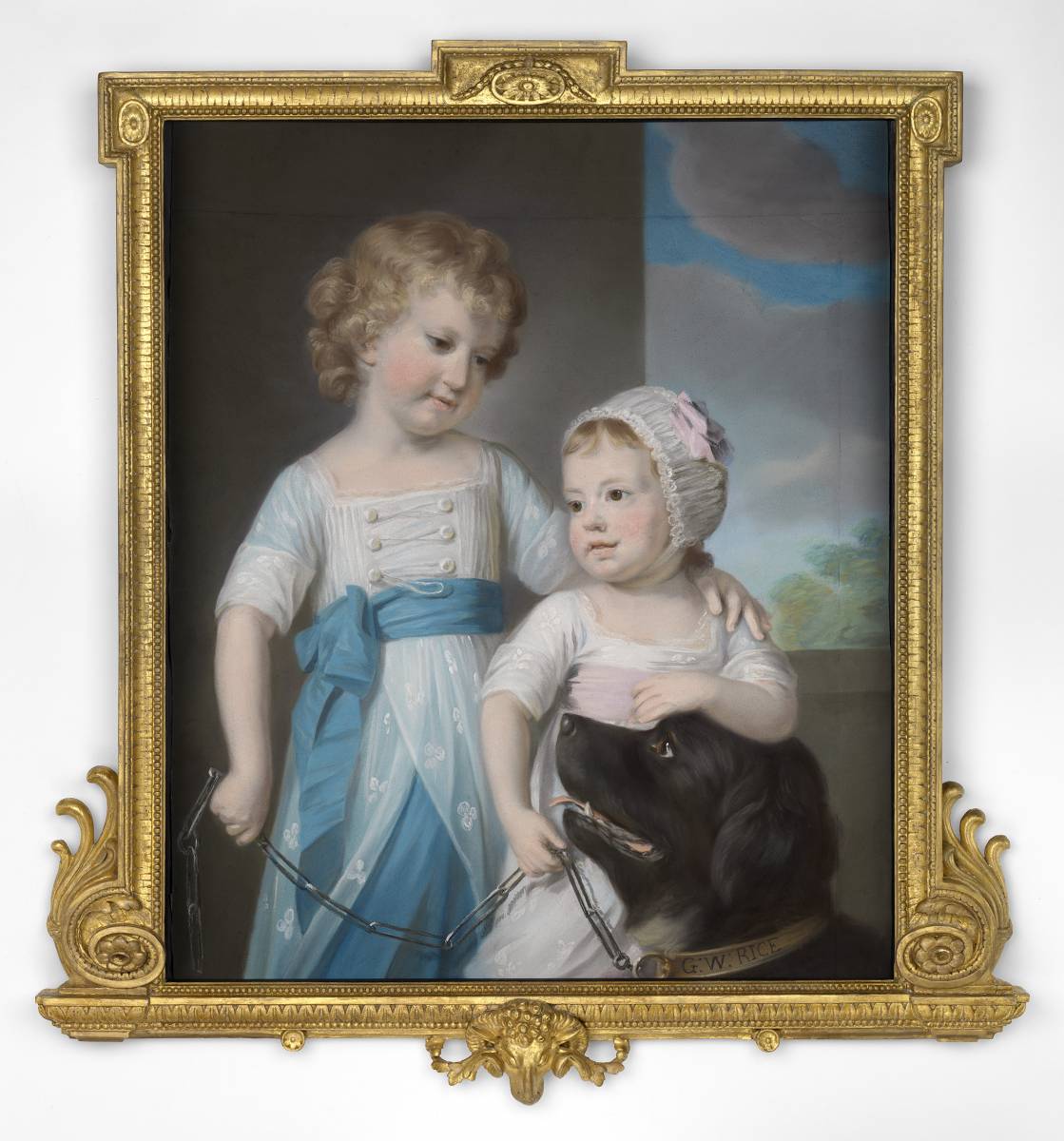This unusually ambitious double portrait by Katherine Read was made in 1771 and depicts the two eldest sons of George Rice and his wife, Cecil de Cardonnel, 2nd Baroness Dynevor.
Read was one of the most celebrated pastellists of the mid-eighteenth century. Following training in Paris and a period spent working in Rome, she established a fashionable and productive studio in London. Read was one of the few professional female painters who made a commercial success in London in the period, becoming an active member of the Society of Artists and a regular participant at London’s new annual exhibitions. Although her association with the medium of pastel and her largely female clientele prevented her from breaking into the exclusive world of the Royal Academy. Read’s use of this medium has meant that she has been largely ignored by recent scholars, only receiving scant critical attention.
George Talbot Rice obtained the county seat in Carmarthenshire in 1790 in an unopposed election. Rice eschewed, however, the Blue colours of the Whigs grouped around the Philipps family at nearby Cwmgwili and sported those of the ‘Gray Coats Independent’: moreover, he accepted the assistance of the Red deputy recorder of Carmarthen, Herbert Lloyd: these acts were symptomatic of the transference of the house of Dynevor from the Whigs to the Tories. Having succeeded to his mother’s barony in 1793, he became the leader of the Reds in the county, marrying the daughter of the influential politician, Thomas Townshend, 1st Viscount Sydney. His son, George Rice-Trevor, was responsible for remodelling Newton House on the Dinefwr estate.
